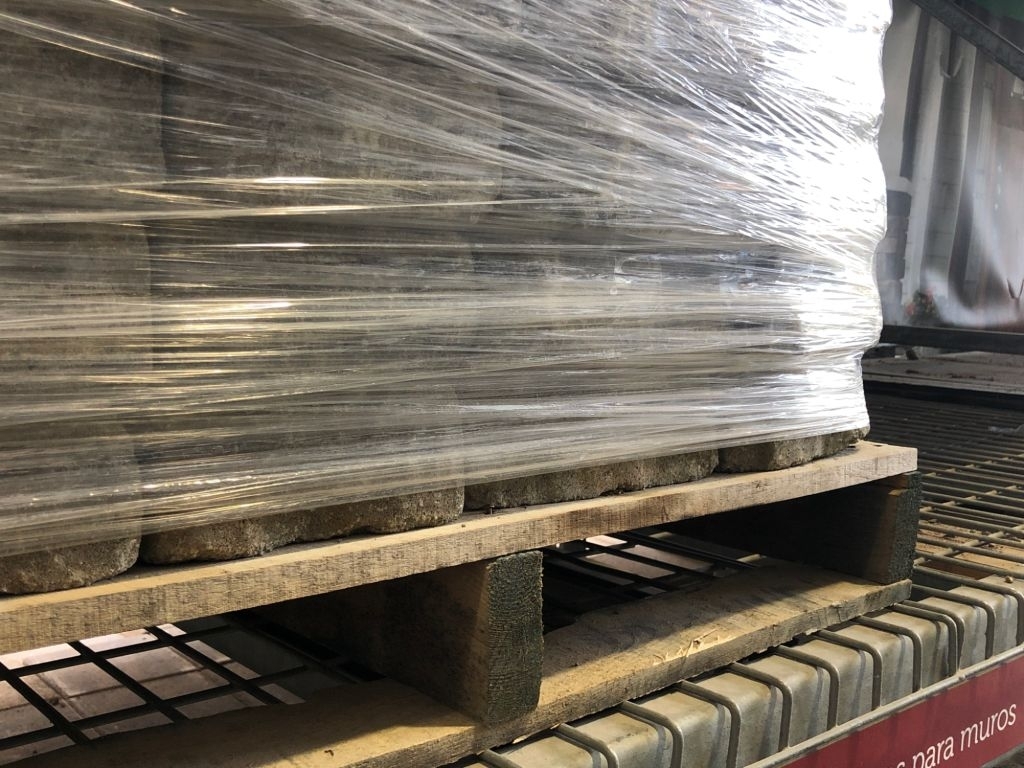
Packaging is crucial when transporting goods by trucks, planes and ships to various locations. Factors such as distance, product weight, product volume, product value, and the packaging methodology determine the safety and cost of transportation.
Most shipments are pallet wrapped due to several reasons as discussed in this post. But before we delve in, there is a need to first define the following terms “pallets” and “palletizing”.
What are pallets?
Pallets are plane structures utilized in commercial and industrial establishments to support goods or containers. They help make the movement of goods easier during cargo transportation. The standard size for a pallet is 120×80 centimeters – they are stacked upon cargos in a process known as pelletizing.
Defining palletizing
Palletizing is a process of dispatching cargo safely. During this process, cargos are placed on a pallet and fastened with wraps or straps to hold it firm and stabilize its positioning. The purpose of palletizing is to prevent unwanted movements of goods on transportation systems.
The importance of a packing system
Setting up a packing system will ensure:
- ease for anyone handling the products
- optimization of space and weight
- establishment of a standard of protection that will ensure your product is secured and not damaged
How to build pallets
Palletizing eliminates damage, guarantees a successful voyage, and ensures a professional and timely delivery. If you want to deliver your shipment without hassles, then consider the following methods of building pallets, whether they will be voyaged across the ocean, by air, or land.
- The inside of the pallet should be wrapped using a pallet wrapping machine with high-quality shrink wrap a few times while leaving room for the forklift. Do not cut the stretch-wrap but prepare it when you are done stacking. It’s now time for assembling your boxes.
- Use a flat cardboard slip sheet beneath the load and throughout the layers to help solidify loose boxes and distribute the weight.
- Align your boxes in columns, laying the heaviest on the bottom, corner-to-corner on the pallet to give additional stacking strength. Avoid interlocking or any irregular layer patterns.
- Avoid creating a pyramid, always keep the top layer flat to prevent damage from top loads.
- Do not extend boxes beyond the pallet’s edge else they will get crushed.
- Aligning the corners of boxes in the gaps between pallet boards could risk damage from the forklift, possibly making it immovable.
- For added strength, use cardboard corner-boards at each corner of the entire shipment and a final cardboard slip sheet on top.
- Use pallet stretch film or stretch-wrap you set aside to cover the shipment to stabilize the load.
- Take note that pallet stretch film only stabilizes the load not fully secure it; hence, use nylon straps or bands to tighten the shipment if you observe the need for extra stability.
- Include all necessary documents and affix proper labels to the shipment.
At this point, your shipment is pallet-wrapped and ready to be shipped. Remember to provide guidelines to your packing team to guarantee the safest and easiest handled transit for your freight shipment.
This will help you save cost and help you get your product to your customers undamaged.

Things to know when shipping pallets
The International Organization for Standardization [ISO] has laid down several measures that cater to various aspects of shipping pallets.
- The most commonly utilized pallet size is 48 inches (breadth) by 40 inches (length) and is commonly used in ships in the Northern American shipping zone
- In Europe, the sizes of the pallets used measures approximately 40 inches (breadth) by 47 inches (length)
- The most commonly used pallets in Australia measure 42 inches (breadth) by 42 inches (length)
- Utilization of inferior materials could result in detrimental shipping, which would affect the reputation and credibility of the shipper and the consignor
- Wood is the most commonly used material used for shipping pallets. However, various regulations need to be addressed before a wooden pallet is approved for utilization
- Apart from wood, paper, plastic, and steel are used as viable structures for cargo consignments’ palletizing
The Bottom Line
Transporting goods needs proper containerization to keep them safe. Cargo Shipping and Freight Services are dedicated to providing professional goods and cargo consignments using pallets.
Pallet stretch film is employed to solve issues related to transporting heavy loads, and that is the reason why it is widely used worldwide. For more information, feel free to get in touch with us.






No comment yet, add your voice below!